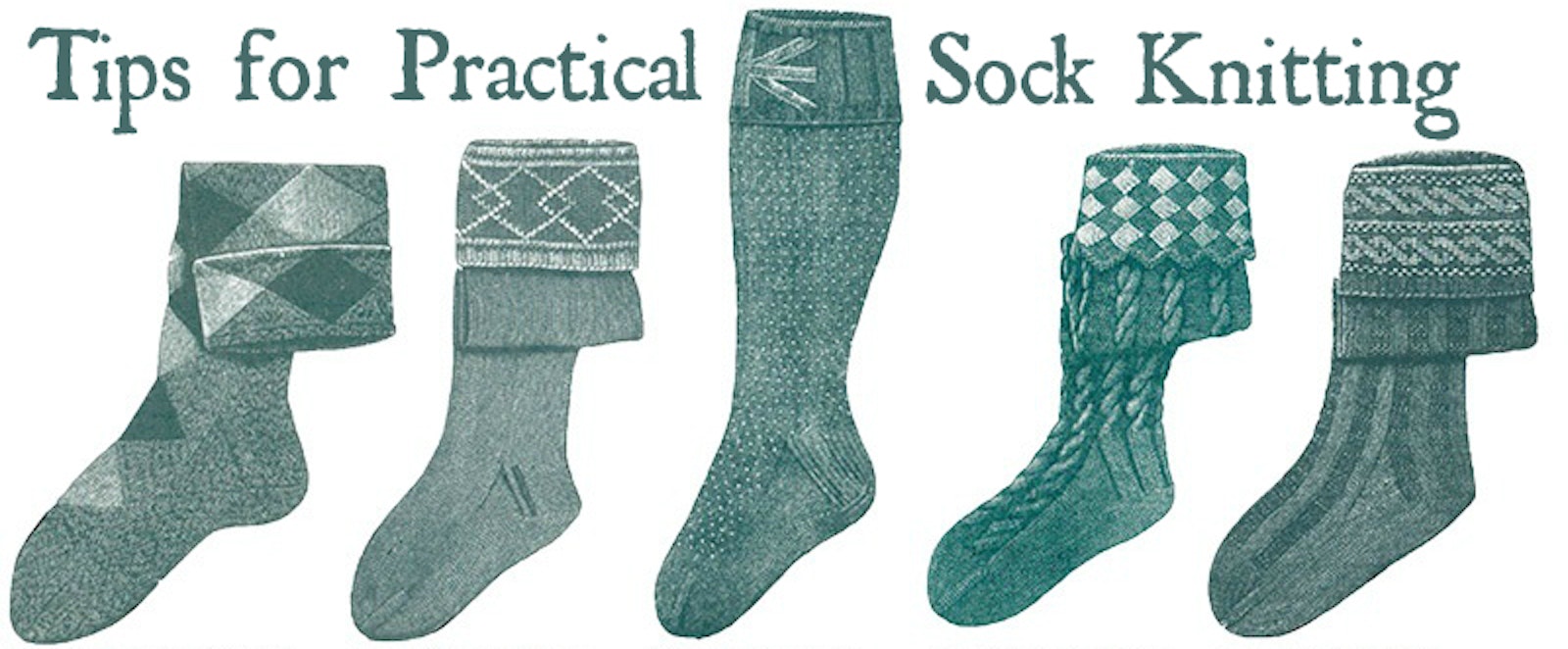In past posts, “Tips for Practical Sock Knitting” has covered all manner of anatomical-sock-knitting topics from heels and toes to refooting. But we have yet to cover the beginning, which is a very good place to start. Commence knitting socks the Weldon’s way with these tips from the pages of Weldon's Practical Stocking Knitter, First & Second Series.
Weldon’s reminds us how wonderful a pair of handknitted socks can be, “[stockings] are certainly far more durable, and therefore more economical than woven ones; they are easier to repair, and if well knitted to begin with, and always carefully washed, will bear re footing two or three times, so that practically one pair of hand-knit are as good as three pair of bought stockings.” I can attest to handknit wool socks wearing extremely well. I’m still wearing my first pair (made over eleven years ago) with no repairs needed. I can’t say the same of my store-bought wool socks, which cost almost the same as the yarn for a pair of handknit socks.
Weldon’s tips on commencing sock knitting:
- “Wools for stocking knitting have greatly improved of late years. Most of the new wools are put up in 2 oz. packets.” Still true today, with the addition of nylon or polyester, a 3.5-ounce (100-gram) skein of sock yarn will make a pair of socks for most women and some men.
- “Steel knitting needles are invariably used for stocking work. These are made in two lengths, 6½ inches and 9 inches; they should have nicely tapered points at both ends.” Whether you use double points or the magic-loop method today, I’m sure you will agree with the Victorians; “nicely tapered points” make quick work of knitting and decreasing tiny sock stitches.
- “Cast on and off rather loosely, and at the casting on leave the tag end of the wool to show where the round begins.” Sage advice for sock knitters of all eras.
Left: No. 2.—Stocking Top. Ribbing Finished and Plain Knitting Commenced. Right: No. 4.—German Method of Commencing.
Weldon’s tips are as true today as they were when they were first published in 1886! Commence knitting socks the Weldon’s way with more great tips featured in the PieceWork eBook Weldon's Practical Stocking Knitter, First & Second Series.
Commence knitting socks!
Elizabeth


